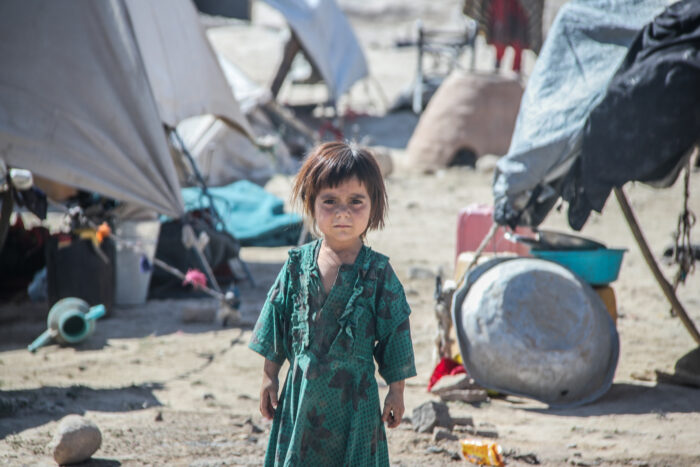This article was originally published by The Brookings Institution
The dramatic scenes from Kabul Airport of desperate Afghans seeking to escape reverberated around the world. The U.S., other governments, and a hodge-podge assortment of private groups succeeded in evacuating more than 120,000 people in the space of a couple of weeks. This was an impressive achievement, but also a chaotic one. And the chaos continues as Afghans are arriving in the U.S. by the thousands with different legal statuses which means different access to benefits.
In addition to U.S. citizens and permanent residents and citizens of allied countries, the U.S. evacuated more than 65,000 Afghans of whom 24,000 have already arrived in the U.S., 23,000 are on U.S. military bases abroad, and 20,000 are waiting in other countries. All are going through strenuous security vetting procedures. Some have Special Immigrant Visas (SIVs); some are in varying stages of the arduous process of applying for an SIV. Some, admitted as refugees or SIVs have access to benefits and a clear pathway to becoming legal permanent residents (green card holders) and eventually U.S. citizens. But the vast majority of the Afghans coming to the U.S. are being admitted through Humanitarian Parole—a process that has been used in the past to quickly process designated groups, such as Cubans and Kurds, who needed to be moved immediately. Humanitarian parole has the advantage of allowing people to enter quickly and was administratively the only way to admit large numbers of Afghans. U.S. resettlement agencies have been warned to expect arrivals of 75,000 Afghans, almost all under humanitarian parole in the next few weeks.
There remains a reservoir of experience in resettling refugees among U.S. government agencies, state and local authorities, Afghan diaspora groups, refugee resettlement agencies, and communities. We know how to resettle refugees.
The U.S. has a long and proud history of resettling refugees. At least until the Trump administration decimated the program, systems were in place to ensure that refugees were welcomed at airports, settled into apartments; received social security cards; accessed Medicaid; and helped to find jobs, learn English, enroll kids in school and other services intended to support their adjustment to American life. In the past funding has never been enough, and refugees have always struggled to make their way in the U.S., to deal with schools and supermarkets, and often to find jobs significantly below their qualifications. The road for resettled refugees was always hard—even during refugee-supportive administrations. Until the Trump administration, refugee resettlement enjoyed not only broad bipartisan support in Congress but widespread public support. Refugees were warmly welcomed in red and blue states. Those systems and the support behind them were badly hurt during the Trump years. But there remains a reservoir of experience in resettling refugees among U.S. government agencies, state and local authorities, Afghan diaspora groups, refugee resettlement agencies, and communities. We know how to resettle refugees.
The problem now is that most Afghans are not arriving as refugees, but under humanitarian parole. This enabled them to be moved quickly—a speed not afforded to traditional refugees. Going through the regular refugee resettlement process takes around two years and normally is not carried out in the U.S. So, it’s a good thing that humanitarian parole was used; it was intended to be used in precisely these kinds of emergencies. We don’t yet know much about the Afghans who have arrived—whether they have families in the U.S. that can take them in or whether they have resources although, it’s unlikely that most of the refugees arrived with sufficient cash to furnish an apartment, pay the security deposit on utilities, or acquire a phone. The government has been able to mobilize some emergency funds to provide small grants to refugees and secure 30 days’ access to Medicaid. But what happens when they don’t have medical insurance and the small grant runs out? Moreover, humanitarian parole is temporary—for two years—during which time the Afghans will need to adjust their status; some may be able to legalize their status through family reunification or other immigration processes. But most will need to apply for asylum—a system that presently has a backlog of 1.4 million cases.
Congressional action is needed to assure that all arriving Afghans have access to refugee benefits and that they can adjust their status without going through the onerous asylum process, which in spite of recent proposals to speed up the system, can still take years. This type of legislative action has been done in other cases and urgently needs to be passed now. The Biden administration should also consider using already-approved refugee admission places for Afghan refugees.
Fewer than 10,000 refugees have been admitted so far this fiscal year—a fiscal year which ends in a few weeks—of the 62,500 refugee ceiling. This could be a quick and relatively uncontroversial fix to a desperate humanitarian situation. We also need action to enable refugees who didn’t make it on those chaotic evacuation flights to be admitted to the U.S. as refugees. Refugees International has proposed humanitarian corridors and some form of in-country processing so that Afghans at risk don’t have to leave the country to be admitted to the U.S. as refugees. This will be complicated but we have done it before: in Vietnam in large numbers and in Central America in very small numbers.
We also need action to enable refugees who didn’t make it on those chaotic evacuation flights to be admitted to the U.S. as refugees.
Afghans seeking refugee status are likely to end up all over the world—in South America, Africa, Asia—and more guidance is needed about how they will be processed as refugees. Under the U.S. refugee program, Priority 1 is for individual cases where resettlement is urgently needed and almost always come through United Nations referrals. Priority 2 is for groups of special humanitarian concern to the U.S. and Priority 3 is for family members of resettled refugees. In August, the Biden administration announced that Afghans who don’t qualify for an SIV visa, are now eligible for a Priority 2 (P2) designation, including those who worked for the U.S. government or a U.S.-based NGO or media company. This was an important move. But there are other Afghans at risk—such as women’s rights activists or women mayors or judges—who should be included in this designation. This would also be a good time to look at the U.S. refugee system which has gotten incredibly complicated and bureaucratic over the years to see if some of the processes could be simplified and sped up.
The U.S. public is ready to welcome the Afghan refugees. Public opinion polls show that a strong majority favor allowing refugees to resettle. Heart-warming stories of local communities bringing food and furniture to newly-arriving Afghans are popping up in the media. Governors of both parties have shown traditional bipartisan support for resettlement with their willingness to do what they can to assist refugees. Our communities will respond generously and compassionately, but we need strong government policies to ensure that the refugees get the support they need.
The whole world watched the flights taking off at Kabul Airport, and the world is watching now to see how Afghans are received. We need to get this right. The Biden administration and Congress need to act and act quickly to provide medical coverage and financial assistance to the arriving Afghans and allow them to adjust to permanent residence status.
Image: Displaced Afghan child in August 2021 amidst the Taliban’s takeover of the country. (Trent Inness / Shutterstock)

